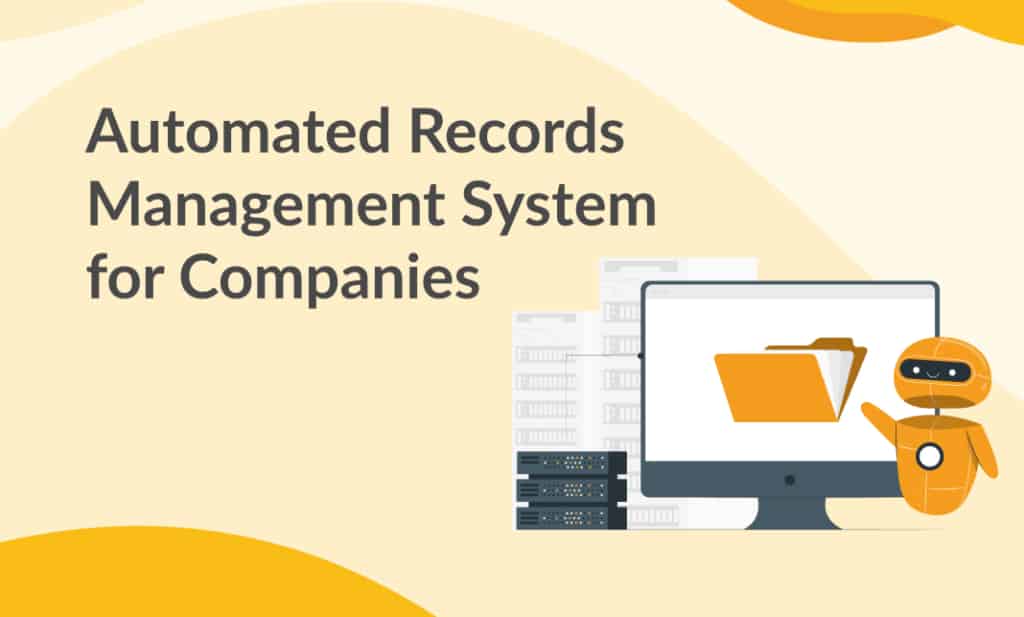Every company requires a management procedure to protect information and data, ensuring that all records and files of an organization are secure while being conveniently accessible to authorized users.
An automated records management system will assist companies in enforcing centralized policy management for retention schedules, file plans, legal preservation holds, and auditing.
Automated Records Management Systems are critical for ensuring a quick and compelling return on investment while lowering the risks and expenses associated with maintaining electronic record assets.
What is an Automated Records Management System
Any system expressly created and used to apply computer technology to automate the operation of a records management program, including records storage and retrieval, cost accounting, retention schedules, and records disposition, is referred to as an automated records management system.
— Law Insider
Why your Company needs an Automated Records Management System
Hiring new personnel will never be the ultimate solution to dealing with the information stream. With more records being created every day, it is critical for any firm to implement an automated records management system.
Automation relieves you of the burden and provides you with unimaginable benefits that you would not have otherwise.
Control and Management
This is critical to the record management system and is accomplished through automated segmentation and scheduling of records using a pre-existing plan and standardized structures; auto-numbering, type-based metadata, lifecycle management, and system configuration with pre-defined reports to locate and screen records — allowing for easy recognition and resolution of outliers; and simple to use search across full-text content, file plan frameworks, and records management.
Disposition and Retention
Records retention and disposition are critical components of an efficient record management system. It guarantees that records are available when needed for litigation, audits, day-to-day corporate operations, or historical research, but that unnecessary records are not taking up valuable storage space. This is accomplished by the use of configurable rules and automated processing to govern and schedule archiving, holds, and destruction; the implementation of distinct retention and archive policies based on type and file plan; and the use of export for long-term archives.
Retrieval and Access
Organizations generate, keep, and preserve records in order for them to be used. If a user is unable to locate a document, it may as well not exist. As a result, an efficient records management program should have methods in place—manual or automated—that can identify and retrieve records in a dependable and timely manner to fulfill the demands of users.
Maintenance and Storage
One solid sign that a business has an effective records management program in place is that its records are securely and efficiently stored and maintained. Cost-effective, secure storage systems with quick and easy retrieval will aid in ensuring the prompt availability of records in the event of litigation and audits, as well as for future reference purposes.
Best practices in Automated Records Management
To get the most out of your records management system, you must adhere to best practices. Here are some of the best practices we advocate to achieve the best results possible.
Defining your business objective
It is difficult to use records management effectively without a defined aim in mind. To effectively employ records management for the creation, archiving, and disposal of records, ensure that a suitable framework of goals and needs is in place.
Indexing and categorization
It is critical for the company to understand how and where all of the information is stored. That is why you should correctly categorize and index the records for future use.
Record safety
Sixty-eight records are either lost or stolen every second you read this post. One of your top responsibilities should be to prevent unwanted access and secure the document from fraud or disaster.
Employee education
Your records management system will not produce an effective result if your staff do not understand how to follow the records management policy.
Maintaining records on a regular basis
A record maintenance schedule is required to reduce the risk of losing records. This will define how long specific records should be retained and when they should be examined or discarded.
Folderit as your Automated Records Management System
Folderit’s Document Management System (DMS) offers a powerful solution that automates essential areas of records management procedures, reduces the archive eco-footprint, and enables better risk management.



